

| Cruise Region : Round the world cruises |
| Company Category : Premium |
| Company name : Princess Cruises |
| Ship name : Pacific Princess |
| Journey Start Date : Mon 20 Jan 2020 |
| Journey End Date : Mon 11 May 2020 |
| Port start : Los Angeles / USA |
| Port end : Los Angeles / USA |
| Count Nights : 112 nights |
| Day | Port | Date | Arrival | Departure |
|---|---|---|---|---|
| 1 | Los Angeles / USA | Mon 20 Jan | 18:00 | |
| 2 | Day at sea / Sea | Tue 21 Jan | ||
| 3 | Day at sea / Sea | Wed 22 Jan | ||
| 4 | Day at sea / Sea | Thu 23 Jan | ||
| 5 | Day at sea / Sea | Fri 24 Jan | ||
| 6 | Day at sea / Sea | Sat 25 Jan | ||
| 7 | Honolulu, Oahu, Hawaii / Hawaii | Sun 26 Jan | 07:00 | 23:00 |
| 8 | Honolulu, Oahu, Hawaii / Hawaii | Mon 27 Jan | 09:00 | 18:00 |
| 9 | Day at sea / Sea | Tue 28 Jan | ||
| 10 | Day at sea / Sea | Wed 29 Jan | ||
| 11 | Day at sea / Sea | Thu 30 Jan | ||
| 12 | Day at sea / Sea | Fri 31 Jan | ||
| 13 | Day at sea / Sea | Sat 01 Feb | ||
| 14 | Rangiroa Atoll Rangiroa / French Polynesia | Sun 02 Feb | 08:00 | 17:00 |
| 15 | Papeete Papeete / French Polynesia | Mon 03 Feb | 07:00 | 22:00 |
| 16 | Day at sea / Sea | Tue 04 Feb | ||
| 17 | Day at sea / Sea | Wed 05 Feb | ||
| 18 | Day at sea / Sea | Thu 06 Feb | 12:00 | 13:00 |
| 19 | Day at sea / Sea | Fri 07 Feb | ||
| 20 | Day at sea / Sea | Sat 08 Feb | ||
| 21 | Day at sea / Sea | Sun 09 Feb | ||
| 22 | Auckland / New Zealand | Mon 10 Feb | 07:00 | 18:00 |
| 23 | Day at sea / Sea | Tue 11 Feb | ||
| 24 | Picton / New Zealand | Wed 12 Feb | 08:00 | 18:00 |
| 25 | Kaikoura / New Zealand | Thu 13 Feb | 07:00 | 16:00 |
| 26 | Danidin / New Zealand | Fri 14 Feb | 10:00 | 20:00 |
| 27 | Oban, Stewart / New Zealand | Sat 15 Feb | 07:00 | 18:00 |
| 28 | Fiordland National Park / New Zealand | Sun 16 Feb | 08:00 | 17:00 |
| 29 | Day at sea / Sea | Mon 17 Feb | ||
| 30 | Day at sea / Sea | Tue 18 Feb | ||
| 31 | Sydney / Australia | Wed 19 Feb | 07:00 | 20:00 |
| 32 | Day at sea / Sea | Thu 20 Feb | ||
| 33 | Melbourne / Australia | Fri 21 Feb | 09:00 | 23:00 |
| 34 | Day at sea / Sea | Sat 22 Feb | ||
| 35 | Adelaide / Australia | Sun 23 Feb | 07:00 | 21:00 |
| 36 | Day at sea / Sea | Mon 24 Feb | ||
| 37 | Day at sea / Sea | Tue 25 Feb | ||
| 38 | Day at sea / Sea | Wed 26 Feb | ||
| 39 | Fremantle / Australia | Thu 27 Feb | 07:00 | 17:00 |
| 40 | Day at sea / Sea | Fri 28 Feb | ||
| 41 | Day at sea / Sea | Sat 29 Feb | ||
| 42 | Day at sea / Sea | Sun 01 Mar | ||
| 43 | Bali / Indonesia | Mon 02 Mar | 08:00 | 18:00 |
| 44 | Day at sea / Sea | Tue 03 Mar | ||
| 45 | Day at sea / Sea | Wed 04 Mar | ||
| 46 | Singapore / Singapore | Thu 05 Mar | 07:00 | 23:00 |
| 47 | Day at sea / Sea | Fri 06 Mar | ||
| 48 | Phuket / Thailand | Sat 07 Mar | 07:00 | 21:00 |
| 49 | Day at sea / Sea | Sun 08 Mar | ||
| 50 | Day at sea / Sea | Mon 09 Mar | ||
| 51 | Day at sea / Sea | Tue 10 Mar | ||
| 52 | Colombo / Sri Lanka | Wed 11 Mar | 07:00 | 19:00 |
| 53 | Day at sea / Sea | Thu 12 Mar | ||
| 54 | Male / Maldives | Fri 13 Mar | 06:00 | 18:00 |
| 55 | Day at sea / Sea | Sat 14 Mar | ||
| 56 | Day at sea / Sea | Sun 15 Mar | ||
| 57 | Day at sea / Sea | Mon 16 Mar | ||
| 58 | Pont Praslin / Mauritius | Tue 17 Mar | 07:00 | 17:00 |
| 59 | Day at sea / Sea | Wed 18 Mar | ||
| 60 | Day at sea / Sea | Thu 19 Mar | ||
| 61 | Zanzibar / Tanzania | Fri 20 Mar | 07:00 | 21:00 |
| 62 | Day at sea / Sea | Sat 21 Mar | ||
| 63 | Mamudzu / Mayotte | Sun 22 Mar | 07:00 | 17:00 |
| 64 | Nosy-Be / Madagascar | Mon 23 Mar | 07:00 | 20:00 |
| 65 | Day at sea / Sea | Tue 24 Mar | ||
| 66 | Day at sea / Sea | Wed 25 Mar | ||
| 67 | Port louis / Mauritius | Thu 26 Mar | 07:00 | 21:00 |
| 68 | Saint Paul / Reunion | Fri 27 Mar | 07:00 | 21:00 |
| 69 | Day at sea / Sea | Sat 28 Mar | ||
| 70 | Day at sea / Sea | Sun 29 Mar | ||
| 71 | Day at sea / Sea | Mon 30 Mar | ||
| 72 | Durban / South Africa | Tue 31 Mar | 07:00 | 16:00 |
| 73 | East London / South Africa | Wed 01 Apr | 11:00 | 20:00 |
| 74 | Day at sea / Sea | Thu 02 Apr | ||
| 75 | Cape Town / South Africa | Fri 03 Apr | 08:00 | |
| 76 | Cape Town / South Africa | Sat 04 Apr | 23:00 | |
| 77 | Day at sea / Sea | Sun 05 Apr | ||
| 78 | Luderitz / Namibia | Mon 06 Apr | 07:00 | 16:00 |
| 79 | Walvis Bay / Namibia | Tue 07 Apr | 09:00 | 21:00 |
| 80 | Day at sea / Sea | Wed 08 Apr | ||
| 81 | Day at sea / Sea | Thu 09 Apr | ||
| 82 | Day at sea / Sea | Fri 10 Apr | ||
| 83 | Saint Helena / Great Britain | Sat 11 Apr | 08:00 | 18:00 |
| 84 | Day at sea / Sea | Sun 12 Apr | ||
| 85 | Day at sea / Sea | Mon 13 Apr | ||
| 86 | Day at sea / Sea | Tue 14 Apr | ||
| 87 | Day at sea / Sea | Wed 15 Apr | ||
| 88 | Natal / Brazil | Thu 16 Apr | 08:00 | 18:00 |
| 89 | Day at sea / Sea | Fri 17 Apr | ||
| 90 | Day at sea / Sea | Sat 18 Apr | ||
| 91 | Day at sea / Sea | Sun 19 Apr | ||
| 92 | Devil's Island / French Guiana | Mon 20 Apr | 07:00 | 21:00 |
| 93 | Day at sea / Sea | Tue 21 Apr | ||
| 94 | For-de-France, Fr. Martinique / Martinique | Wed 22 Apr | 07:00 | 16:00 |
| 95 | Saint Barthélemy de Büsser / France | Thu 23 Apr | 07:00 | 16:00 |
| 96 | Day at sea / Sea | Fri 24 Apr | ||
| 97 | Day at sea / Sea | Sat 25 Apr | ||
| 98 | Fort Lauderdale / USA | Sun 26 Apr | 07:00 | 16:00 |
| 99 | Day at sea / Sea | Mon 27 Apr | ||
| 100 | Day at sea / Sea | Tue 28 Apr | ||
| 101 | Aruba (Oranjestad) / Aruba | Wed 29 Apr | 10:00 | 18:00 |
| 102 | Day at sea / Sea | Thu 30 Apr | ||
| 103 | Panama Canal / Panama | Fri 01 May | 05:00 | 16:30 |
| 104 | Day at sea / Sea | Sat 02 May | ||
| 105 | Quepos Quepos / Costa Rica | Sun 03 May | 07:00 | 17:00 |
| 106 | Day at sea / Sea | Mon 04 May | ||
| 107 | Puerto Chiapas / Mexico | Tue 05 May | 08:00 | 16:00 |
| 108 | Day at sea / Sea | Wed 06 May | ||
| 109 | Day at sea / Sea | Thu 07 May | ||
| 110 | Cabo San Lucas / Mexico | Fri 08 May | 12:00 | 22:00 |
| 111 | Day at sea / Sea | Sat 09 May | ||
| 112 | Day at sea / Sea | Sun 10 May | ||
| 113 | Los Angeles / USA | Mon 11 May | 07:00 |
| Build Year : 1999 |
| Width : 25.00 |
| Length : 181.00 |
| Speed : 18.00 |
| Capacity : 688 |
| Deck Quantity : 9 |
| Cabin Quantity : 344 |
| Restaurant Quantity : 3 |
| Lift Quantity : 4 |
| Balancer : Yes |
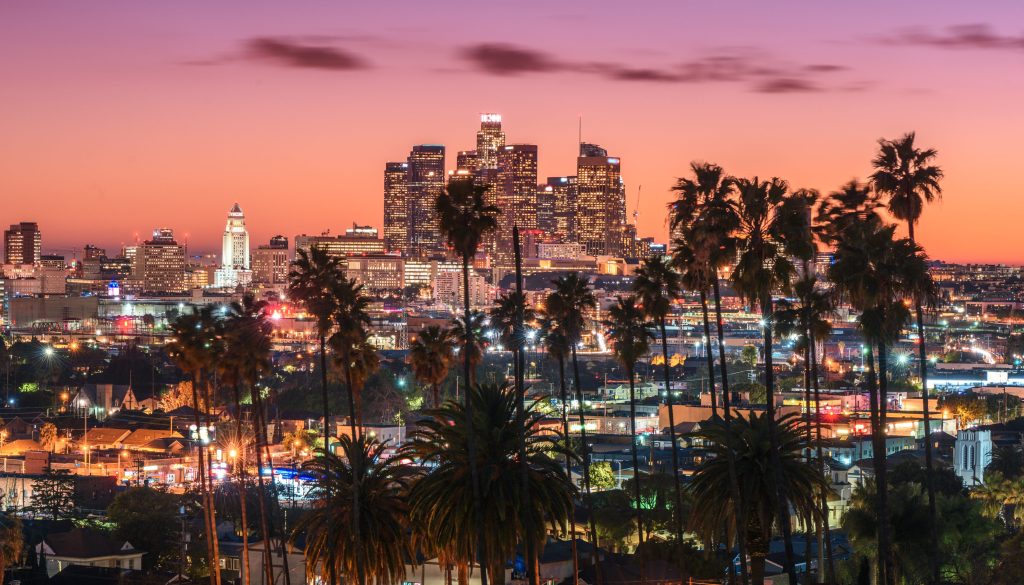
Los Angeles officially the City of Los Angeles and often known colloquially by its initials L.A., is the most populous city in California and the second most populous city in the United States, after New York. With an estimated population of four million, Los Angeles is the cultural, financial, and commercial center of Southern California. Nicknamed the "City of Angels" partly because of its name's Spanish meaning, Los Angeles is known for its Mediterranean climate, ethnic diversity, Hollywood, and the entertainment industry, and sprawling metropolis.
Los Angeles is in a large basin bounded by the Pacific Ocean on one side and by mountains as high as 10,000 feet (3,000 m) on the others. The city proper, which covers about 469 square miles (1,210 km2), is the seat of Los Angeles County, the most populated county in the country. Los Angeles is also the principal city of the Los Angeles metropolitan area, the second largest in the United States after that of New York City, with a population of 13.1 million. It is part of the Los Angeles-Long Beach combined statistical area, also the nation's second most populous area with a 2015 estimated population of 18.7 million.
Los Angeles is one of the most substantial economic engines within the United States, with a diverse economy in a broad range of professional and cultural fields. Los Angeles is also famous as the home of Hollywood, a major center of the world entertainment industry. A global city, it has been ranked 6th in the Global Cities Index and 9th in the Global Economic Power Index. The Los Angeles combined statistical area also has a gross metropolitan productof $831 billion (as of 2008), making it the third-largest in the world, after the Tokyo and New York metropolitan areas. Los Angeles hosted the 1932 and 1984 Summer Olympics and will host the event for a third time in 2028. The city also hosted the Miss Universe pageant twice, in 1990 and 2006, and was one of 9 American cities to host the 1994 FIFA men's soccer World Cup and one of 8 to host the 1999 FIFA women's soccer World Cup, hosting the finalmatch for both tournaments.
Historically home to the Chumash and Tongva, Los Angeles was claimed by Juan Rodríguez Cabrillo for Spain in 1542 along with the rest of what would become Alta California. The city was officially founded on September 4, 1781, by Spanish governor Felipe de Neve. It became a part of Mexico in 1821 following the Mexican War of Independence. In 1848, at the end of the Mexican–American War, Los Angeles and the rest of California were purchased as part of the Treaty of Guadalupe Hidalgo, becoming part of the United States. Los Angeles was incorporated as a municipality on April 4, 1850, five months before California achieved statehood. The discovery of oil in the 1890s brought rapid growth to the city. The completion of the Los Angeles Aqueduct in 1913, delivering water from Eastern California, later assured the city's continued rapid growth.






Honolulu is the capital and largest city of the U.S. state of Hawaiʻi. It is an unincorporated part of and the county seat of the City and County of Honolulu along the southeast coast of the island of Oʻahu. The city is the main gateway to Hawaiʻi and a major portal into the United States. The city is also a major hub for international business, military defense, as well as famously being host to a diverse variety of east-west and Pacific culture, cuisine, and traditions.
Honolulu is the most remote city of its size in the world and is the westernmost major U.S. city. For statistical purposes, the United States Census Bureau recognizes the approximate area commonly referred to as "City of Honolulu" (not to be confused with the "City and County") as a census county division (CCD). Honolulu is a major financial center of the islands and of the Pacific Ocean. The population of the Honolulu census designated place(CDP) was 359,870 as of the 2017 population estimate, while the Honolulu CCD was 390,738 and the population of the consolidated city and county was 953,207.
Honolulu means "sheltered harbor" or "calm port". The old name is Kou, a district roughly encompassing the area from Nuʻuanu Avenue to Alakea Street and from Hotel Street to Queen Street which is the heart of the present downtown district. The city has been the capital of the Hawaiian Islands since 1845 and gained historical recognition following the attack on Pearl Harbor by Japan near the city on December 7, 1941.
As of 2015, Honolulu was ranked high on world livability rankings, and was also ranked as the 2nd safest city in the U.S. It is also the most populated Oceanian city outside Australasia and ranks second to Auckland as the most-populous city in Polynesia.

Honolulu is the capital and largest city of the U.S. state of Hawaiʻi. It is an unincorporated part of and the county seat of the City and County of Honolulu along the southeast coast of the island of Oʻahu. The city is the main gateway to Hawaiʻi and a major portal into the United States. The city is also a major hub for international business, military defense, as well as famously being host to a diverse variety of east-west and Pacific culture, cuisine, and traditions.
Honolulu is the most remote city of its size in the world and is the westernmost major U.S. city. For statistical purposes, the United States Census Bureau recognizes the approximate area commonly referred to as "City of Honolulu" (not to be confused with the "City and County") as a census county division (CCD). Honolulu is a major financial center of the islands and of the Pacific Ocean. The population of the Honolulu census designated place(CDP) was 359,870 as of the 2017 population estimate, while the Honolulu CCD was 390,738 and the population of the consolidated city and county was 953,207.
Honolulu means "sheltered harbor" or "calm port". The old name is Kou, a district roughly encompassing the area from Nuʻuanu Avenue to Alakea Street and from Hotel Street to Queen Street which is the heart of the present downtown district. The city has been the capital of the Hawaiian Islands since 1845 and gained historical recognition following the attack on Pearl Harbor by Japan near the city on December 7, 1941.
As of 2015, Honolulu was ranked high on world livability rankings, and was also ranked as the 2nd safest city in the U.S. It is also the most populated Oceanian city outside Australasia and ranks second to Auckland as the most-populous city in Polynesia.






Rangiroa, is the largest atoll in the Tuamotus, and one of the largest in the world (although it is smaller than Kwajalein in the Marshall Islands and Huvadhu in the Maldives). It is part of the Palliser group. The nearest atoll is Tikehau, 12 km to the west. It is about 355 km northeast of Tahiti.
Rangiroa is home to about 2,500 people on almost 80 km2. The chief town is Avatoru, in the atoll's northwest.

Papeete is the capital city of French Polynesia, an overseas collectivity of France in the Pacific Ocean. The commune of Papeete is located on the island of Tahiti, in the administrative subdivision of the Windward Islands, of which Papeete is the administrative capital. The French High Commissioner also resides in Papeete. It is the primary center of Tahitian and French Polynesian public and private governmental, commercial, industrial and financial services, the hub of French Polynesian tourism and a commonly used port of call. The Windward Islands are themselves part of the Society Islands. The name Papeete means "water from a basket".
The urban area of Papeete had a total population of 136,771 inhabitants at the August 2017 census, 26,926 of whom lived in the commune of Papeete proper.






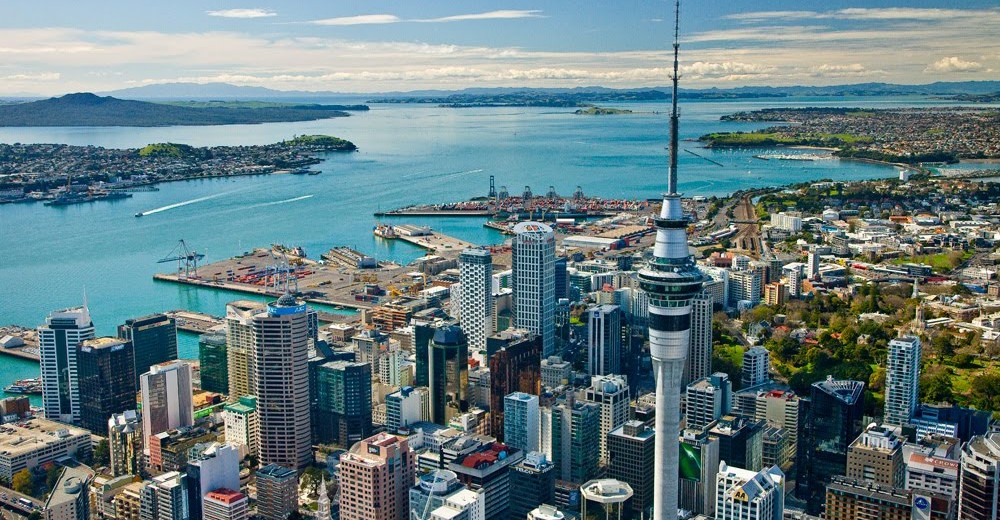


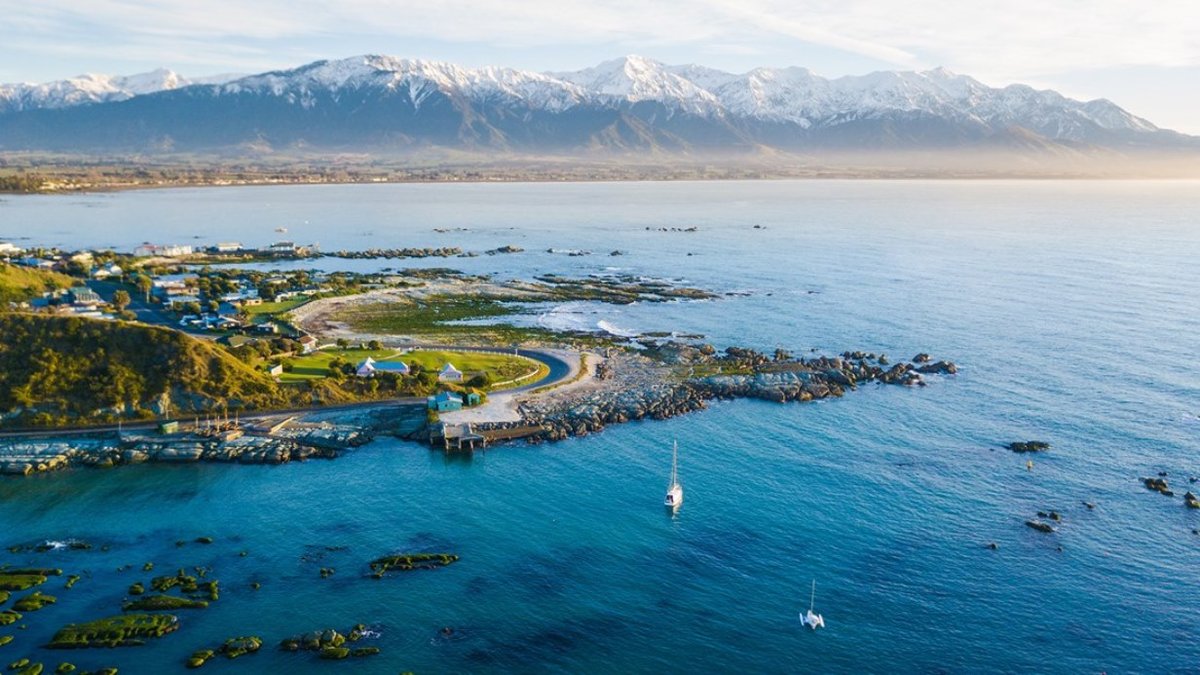


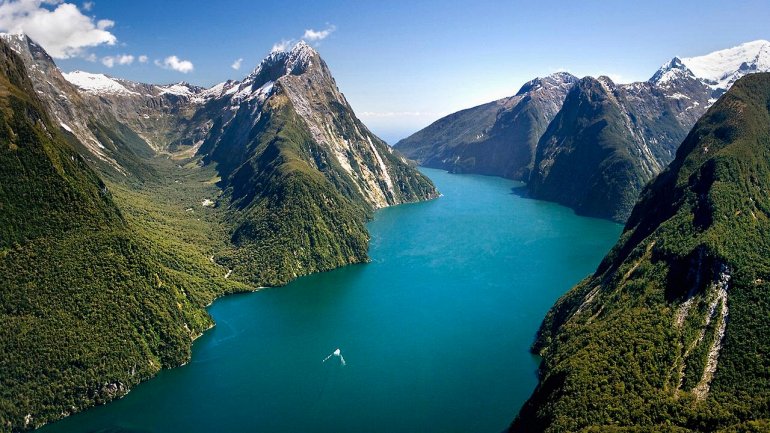


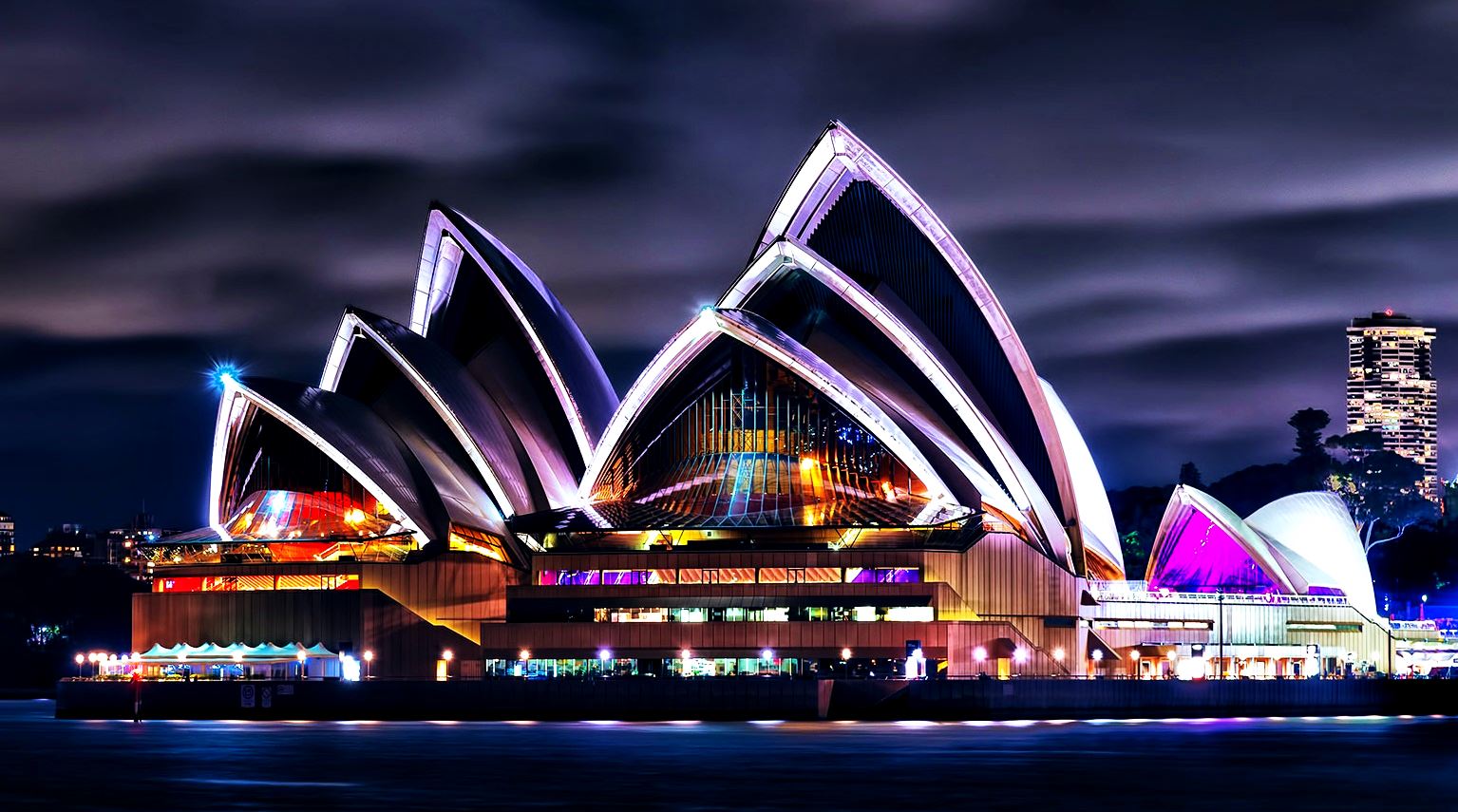
Sydney is the state capital of New South Wales and the most populous city in Australiaand Oceania. Located on Australia's east coast, the metropolis surrounds Port Jackson and extends about 70 km (43.5 mi) on its periphery towards the Blue Mountains to the west, Hawkesbury to the north, and Macarthur to the south. Sydney is made up of 658 suburbs, 40 local government areas and 15 contiguous regions. Residents of the city are known as "Sydneysiders". As of June 2017, Sydney's estimated metropolitan population was 5,131,326, and is home to approximately 65% of the state's population.


Melbourne is the capital and most populous city of the Australian state of Victoria, and the second most populous city in Australia and Oceania. Its name refers to an urban agglomeration of 9,992.5 km2 (3,858.1 sq mi), comprising a metropolitan area with 31 municipalities, and is also the common name for its city centre. The city occupies much of the coastline of Port Phillip bay and spreads into the hinterlands towards the Dandenong and Macedon ranges, Mornington Peninsula and Yarra Valley. It has a population of approximately 4.9 million (19% of the population of Australia), and its inhabitants are referred to as "Melburnians".
The city was founded on 30 August 1835, in what was the British colony of New South Wales, by free settlers from the colony of Van Diemen’s Land. It was incorporated as a Crown settlement in 1837 and named in honour of the British Prime Minister, William Lamb, 2nd Viscount Melbourne. It was declared a city by Queen Victoria in 1847, after which it became the capital of the new colony of Victoria in 1851. In the wake of the 1850s Victorian gold rush, the city entered the "Marvellous Melbourne" boom period, transforming into one of the most important cities in the British Empire and one of the largest and wealthiest in the world. After the federation of Australia in 1901, it served as interim seat of government of the new nation until Canberra became the permanent capital in 1927. Today, it is a leading financial centre in the Asia-Pacific region and ranks 20th in the Global Financial Centres Index.


Adelaide is the capital city of the state of South Australia, and the fifth-most populous city of Australia. In June 2017, Adelaide had an estimated resident population of 1,333,927. Adelaide is home to more than 75 percent of the South Australian population, making it the most centralised population of any state in Australia.




Fremantle is a major Australian port city in Western Australia, located at the mouth of the Swan River. Fremantle Harbour serves as the port of Perth, the state capital. Fremantle was the first area settled by the Swan River colonists in 1829.It was declared a city in 1929, and has a population of approximately 29,000.
The city is named after Captain Charles Fremantle, the English naval officer who established a camp at the site on 2 May 1829. The city contains well-preserved 19th century buildings and other heritage features. The Western Australian vernacular diminutive for Fremantle is Freo. The Nyungar name for the area is Walyallup.




Bali is a province of Indonesia and the westernmost of the Lesser Sunda Islands. Located east of Java and west of Lombok, the province includes the island of Bali and a few smaller neighbouring islands, notably Nusa Penida, Nusa Lembongan, and Nusa Ceningan. The provincial capital, Denpasar, is the most populous city in the Lesser Sunda Islands and the second largest, after Makassar, in Eastern Indonesia. Bali is the only Hindu-majority province in Indonesia, with 83.5% of the population adhering to Balinese Hinduism.
Bali is Indonesia's main tourist destination, which has seen a significant rise in tourists since the 1980s. Tourism-related business makes up 80% of its economy. It is renowned for its highly developed arts, including traditional and modern dance, sculpture, painting, leather, metalworking, and music. The Indonesian International Film Festival is held every year in Bali. In March 2017, TripAdvisor named Bali as the world's top destination in its Traveller's Choice award.
Bali is part of the Coral Triangle, the area with the highest biodiversity of marine species. In this area alone, over 500 reef-building coral species can be found. For comparison, this is about seven times as many as in the entire Caribbean. Most recently, Bali was the host of the Miss World 2013 and 2018 Annual Meetings of the International Monetary Fund and the World Bank Group. Bali is the home of the Subak irrigation system, a UNESCO World Heritage Site. It is also home to a unified confederation of kingdoms composed of 10 traditional royal Balinese houses, each house ruling a specific geographic area. The confederation is the successor of the Bali Kingdom. The royal houses are not recognised by the government of Indonesia; however, they originated before Dutch colonisation.



Сингапур довольно необычный город Азии — это город-государство, которое расположилось на островах в Индийском океане. Его колониальные кварталы, храмы, музеи, великолепны парки, аттракционы, современные небоскребы и крупнейший морской порт, придают городу уникальный колорит и неповторимость. Город получил важное экономическое и политическое значение среди стран Восточной Азии. Все основные достопримечательности сосредоточены в четырех районах города. Основными из них являются: здание Импресс-Плейс-Билдинг, армянская церковь Св. Грегора-Святителя, Концертный зал и театр Виктории, англиканский собор Св. Андрея, католический собор Гуд-Шеферд, здания Парламента, а так же много других памятников архитектуры, дворцов, храмов и просто интересных улиц и кварталов.


Phuket is one of the southern provinces (changwat) of Thailand. It consists of the island of Phuket, the country's largest island, and another 32 smaller islands off its coast. It lies off the west coast of Thailand in the Andaman Sea. Phuket Island is connected by the Sarasin Bridge to Phang Nga Province to the north. The next nearest province is Krabi, to the east across Phang Nga Bay.




Colombo is the commercial capital and largest city of Sri Lanka. According to the Brookings Institution, Colombo metropolitan area has a population of 5.6 million, and 752,993 in the city proper. It is the financial centre of the island and a popular tourist destination. It is located on the west coast of the island and adjacent to the Greater Colombo area which includes Sri Jayawardenepura Kotte, the legislative capital of Sri Lanka and Dehiwala-Mount Lavinia. Colombo is often referred to as the capital since Sri Jayawardenepura Kotte is within the urban area of, and a suburb of, Colombo. It is also the administrative capital of the Western Province and the district capital of Colombo District. Colombo is a busy and vibrant place with a mixture of modern life and colonial buildings and ruins. It was the legislative capital of Sri Lanka until 1982.
Due to its large harbour and its strategic position along the East-West sea trade routes, Colombo was known to ancient traders 2,000 years ago. It was made the capital of the island when Sri Lanka was ceded to the British Empire in 1815, and its status as capital was retained when the nation became independent in 1948. In 1978, when administrative functions were moved to Sri Jayawardenepura Kotte, Colombo was designated as the commercial capital of Sri Lanka.


Мале — это столица Мальдивской республики, которая расположена в центре архипелага. Территория составляет всего два квадратных километра, из-за чего город не может иметь все, что положено столице. Поэтому крупные предприятия, концерны, и важные государственные объекты, такие например как аэропорт, находятся на соседних островах. Несмотря на маленькие размеры, остров довольно густо населён, поэтому его территорию искусственно расширяют. Сегодня Мале единственный город в стране, который имеет асфальтированные дороги и высотные дома. Но, не смотря на это, город сохранил красоту дикой природы и прелесть белых пляжей с чистой морской водой.


















Durban is the third most populous city in South Africa—after Johannesburg and Cape Town—and the largest city in the South African province of KwaZulu-Natal. Located on the east coast of South Africa, Durban is famous for being the busiest port in the country. It is also seen as one of the major centres of tourism because of the city's warm subtropical climate and extensive beaches. Durban forms part of the eThekwini Metropolitan Municipality, which includes neighboring towns and has a population of about 3.44 million, making the combined municipality one of the biggest cities on the Indian Ocean coast of the African continent. It is also the second most important manufacturing hub in South Africa after Johannesburg. In 2015, Durban was recognised as one of the New7Wonders Cities (along with Vigan, Doha, La Paz, Havana, Beirut, and Kuala Lumpur).

East London is a popularly and informally defined part of London, capital of the United Kingdom, lying east of the ancient Cityand north of the River Thames.
East London might be defined as comprising the whole of six modern London Boroughs: Tower Hamlets, Newham, Waltham Forest, Barking and Dagenham, Redbridge, Havering, and the greater part of a seventh, Hackney.
The East End of London is a subset of East London, consisting of areas close to the ancient City of London.
The Eastern (E) Postal District is a different subset of East London; and there is also an "East" sub-region used in the London Plan for planning policy reporting purposes. The most recent (2011) iteration includes seven boroughs north of the Thames, with the addition of three boroughs south of the river.


Cape Town is the oldest city in South Africa, colloquially named the Mother City. It is the legislative capital of South Africa and primate city of the Western Cape province. It forms part of the City of Cape Town metropolitan municipality.
The Parliament of South Africa sits in Cape Town. The other two capitals are located in Pretoria (the administrative capital where the Presidency is based) and Bloemfontein (the judicial capital where the Supreme Court of Appeal is located). The city is known for its harbour, for its natural setting in the Cape Floristic Region, and for landmarks such as Table Mountain and Cape Point. As of 2014, it is the 10th most populous city in Africa and home to 64% of the Western Cape's population. It is one of the most multicultural cities in the world, reflecting its role as a major destination for immigrants and expatriates to South Africa. The city was named the World Design Capital for 2014 by the International Council of Societies of Industrial Design. In 2014, Cape Town was named the best place in the world to visit by both The New York Times and The Daily Telegraph.
Located on the shore of Table Bay, Cape Town, as the oldest urban area in South Africa, was developed by the Dutch East India Company (VOC) as a supply station for Dutch ships sailing to East Africa, India, and the Far East. Jan van Riebeeck's arrival on 6 April 1652 established Dutch Cape Colony, the first permanent European settlement in South Africa. Cape Town outgrew its original purpose as the first European outpost at the Castle of Good Hope, becoming the economic and cultural hub of the Cape Colony. Until the Witwatersrand Gold Rush and the development of Johannesburg, Cape Town was the largest city in South Africa.

Cape Town is the oldest city in South Africa, colloquially named the Mother City. It is the legislative capital of South Africa and primate city of the Western Cape province. It forms part of the City of Cape Town metropolitan municipality.
The Parliament of South Africa sits in Cape Town. The other two capitals are located in Pretoria (the administrative capital where the Presidency is based) and Bloemfontein (the judicial capital where the Supreme Court of Appeal is located). The city is known for its harbour, for its natural setting in the Cape Floristic Region, and for landmarks such as Table Mountain and Cape Point. As of 2014, it is the 10th most populous city in Africa and home to 64% of the Western Cape's population. It is one of the most multicultural cities in the world, reflecting its role as a major destination for immigrants and expatriates to South Africa. The city was named the World Design Capital for 2014 by the International Council of Societies of Industrial Design. In 2014, Cape Town was named the best place in the world to visit by both The New York Times and The Daily Telegraph.
Located on the shore of Table Bay, Cape Town, as the oldest urban area in South Africa, was developed by the Dutch East India Company (VOC) as a supply station for Dutch ships sailing to East Africa, India, and the Far East. Jan van Riebeeck's arrival on 6 April 1652 established Dutch Cape Colony, the first permanent European settlement in South Africa. Cape Town outgrew its original purpose as the first European outpost at the Castle of Good Hope, becoming the economic and cultural hub of the Cape Colony. Until the Witwatersrand Gold Rush and the development of Johannesburg, Cape Town was the largest city in South Africa.


Lüderitz is a harbour town in the ǁKaras Region of southern Namibia. It lies on one of the least hospitable coasts in Africa. It is a port developed around Robert Harbour and Shark Island.
The town is known for its colonial architecture, including some Art Nouveau work, and for wildlife including seals, penguins, flamingos and ostriches. It is also home to a museum, and lies at the end of a currentlydecommissioned railway line to Keetmanshoop.














The penal colony of Cayenne, commonly known as Devil's Island, was a French penal colony that operated in the 19th and 20th century in the Salvation's Islands of French Guiana. Opened in 1852, the Devil's Island system received convicts deported from all parts of the Second French Empire, and was infamous for its harsh treatment of detainees, with a death rate of 75% at their worst, until it was closed down in 1953. Devil's Island was notorious for being used for the internal exile of French political prisoners, with the most famous being Captain Alfred Dreyfus.





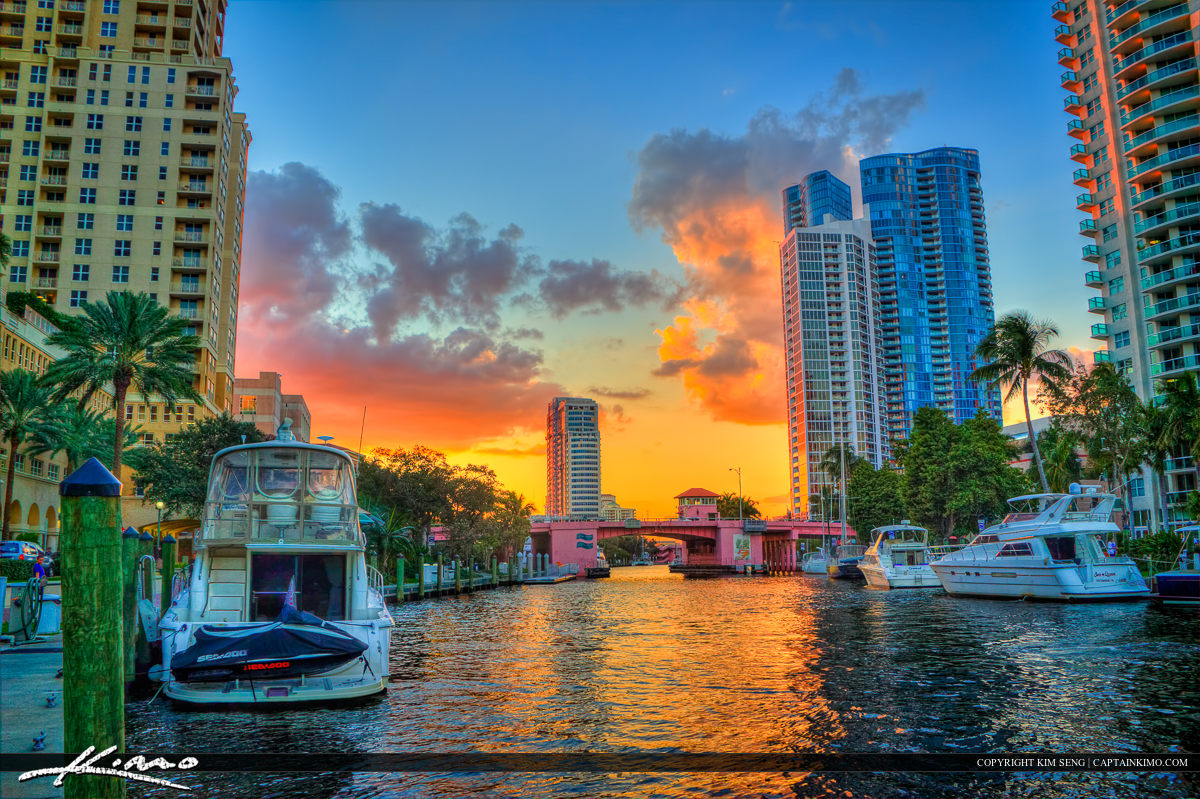
Fort Lauderdale is a city in the U.S. state of Florida, 28 miles (45 km) north of Miami. It is the county seat of Broward County. As of the 2017 census, the city has an estimated population of 180,072. Fort Lauderdale is a principal city of the Miami metropolitan area, which was home to an estimated 6,158,824 people in 2017.
The city is a popular tourist destination, with an average year-round temperature of 75.5 °F (24.2 °C) and 3,000 hours of sunshine per year. Greater Fort Lauderdale, encompassing all of Broward County, hosted 12 million visitors in 2012, including 2.8 million international visitors. In 2012, the county collected $43.9 million from the 5% hotel tax it charges, after hotels in the area recorded an occupancy rate for the year of 72.7 percent and an average daily rate of $114.48. The district has 561 hotels and motels comprising nearly 35,000 rooms. Forty-six cruise ships sailed from Port Everglades in 2012. Greater Fort Lauderdale has over 4,000 restaurants, 63 golf courses, 12 shopping malls, 16 museums, 132 nightclubs, 278 parkland campsites, and 100 marinas housing 45,000 resident yachts.
Fort Lauderdale is named after a series of forts built by the United States during the Second Seminole War. The forts took their name from Major William Lauderdale (1782–1838), younger brother of Lieutenant Colonel James Lauderdale. William Lauderdale was the commander of the detachment of soldiers who built the first fort. However, development of the city did not begin until 50 years after the forts were abandoned at the end of the conflict.
Three forts named "Fort Lauderdale" were constructed: the first was at the fork of the New River, the second was at Tarpon Bend on the New River between the present-day Colee Hammock and Rio Vista neighborhoods, and the third was near the site of the Bahia Mar Marina.


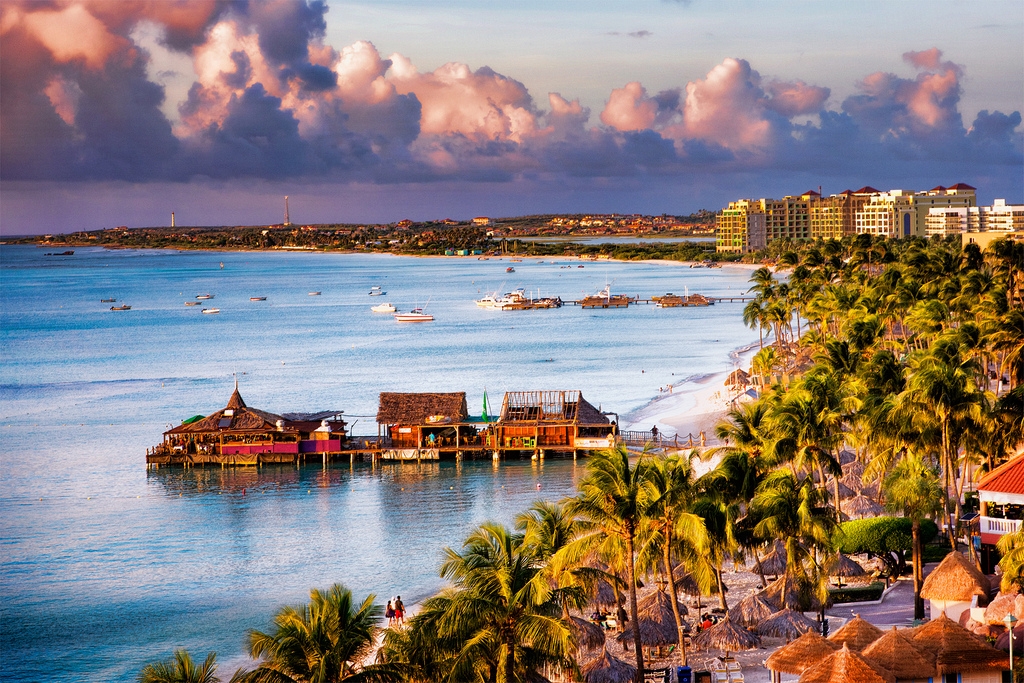
Aruba is an island and a constituent country of the Kingdom of the Netherlands in the southern Caribbean Sea, located about 1,600 kilometres (990 mi) west of the main part of the Lesser Antilles and 29 kilometres (18 mi) north of the coast of Venezuela. It measures 32 kilometres (20 mi) long from its northwestern to its southeastern end and 10 kilometres (6 mi) across at its widest point. Together with Bonaire and Curaçao, Aruba forms a group referred to as the ABC islands. Collectively, Aruba and the other Dutch islands in the Caribbean are often called the Dutch Caribbean.
Aruba is one of the four countries that form the Kingdom of the Netherlands, along with the Netherlands, Curaçao, and Sint Maarten; the citizens of these countries are all Dutch nationals. Aruba has no administrative subdivisions, but, for census purposes, is divided into eight regions. Its capital is Oranjestad.
Unlike much of the Caribbean region, Aruba has a dry climate and an arid, cactus-strewn landscape. This climate has helped tourism as visitors to the island can reliably expect warm, sunny weather. It has a land area of 179 km2(69.1 sq mi) and is densely populated, with a total of 102,484 inhabitants at the 2010 Census. It lies outside Hurricane Alley.


The Panama Canal is an artificial 82 km (51 mi) waterway in Panama that connects the Atlantic Ocean with the Pacific Ocean. The canal cuts across the Isthmus of Panama and is a conduit for maritime trade. Canal locks are at each end to lift ships up to Gatun Lake, an artificial lake created to reduce the amount of excavation work required for the canal, 26 m (85 ft) above sea level, and then lower the ships at the other end. The original locks are 34 m (110 ft) wide. A third, wider lane of locks was constructed between September 2007 and May 2016. The expanded canal began commercial operation on June 26, 2016. The new locks allow transit of larger, post-Panamax ships, capable of handling more cargo.
France began work on the canal in 1881, but stopped due to engineering problems and a high worker mortality rate. The United States took over the project in 1904 and opened the canal on August 15, 1914. One of the largest and most difficult engineering projects ever undertaken, the Panama Canal shortcut greatly reduced the time for ships to travel between the Atlantic and Pacific Oceans, enabling them to avoid the lengthy, hazardous Cape Horn route around the southernmost tip of South America via the Drake Passage or Strait of Magellan.
Colombia, France, and later the United States controlled the territory surrounding the canal during construction. The US continued to control the canal and surrounding Panama Canal Zone until the 1977 Torrijos–Carter Treatiesprovided for handover to Panama. After a period of joint American–Panamanian control, in 1999, the canal was taken over by the Panamanian government. It is now managed and operated by the government-owned Panama Canal Authority.






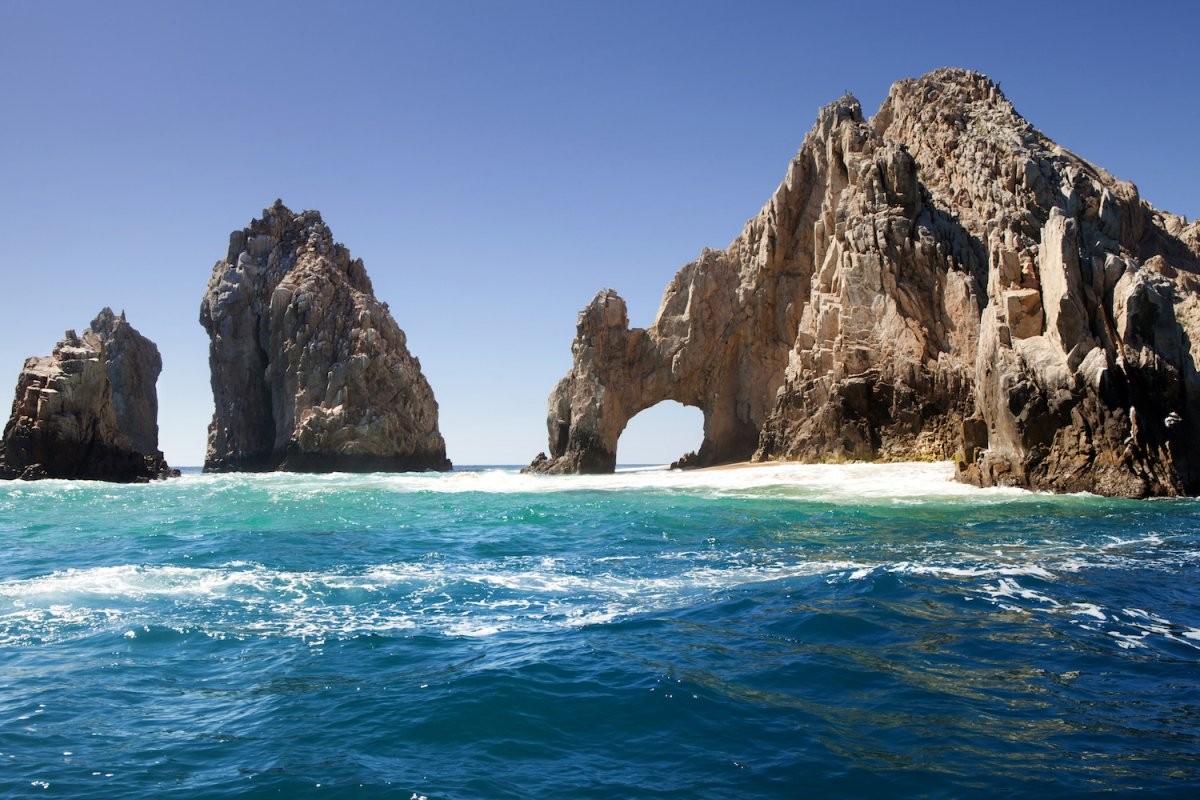
Cabo San Lucas or simply Cabo, is a resort city at the southern tip of the Baja California Peninsula, in the Mexican state of Baja California Sur. As of 2015, the population of the city was 81,111 inhabitants. Cabo San Lucas together with San José del Cabo is known as Los Cabos. Together they form a metropolitan area of 305,983 inhabitants.
Cabo has been rated as one of Mexico's top 5 tourist destinations; it is known for its beaches, scuba diving locations, balnearios, the sea arch El Arco de Cabo San Lucas, and marine life. The Los Cabos Corridor has become a heavily trafficked vacation destination for tourists, with numerous resorts and timeshares along the coast between Cabo San Lucas and San José del Cabo.
Cabo houses a range of wildlife, including rays, sharks, birds, and a range of fish, such as mahi-mahi (dorado), and striped marlin.



Los Angeles officially the City of Los Angeles and often known colloquially by its initials L.A., is the most populous city in California and the second most populous city in the United States, after New York. With an estimated population of four million, Los Angeles is the cultural, financial, and commercial center of Southern California. Nicknamed the "City of Angels" partly because of its name's Spanish meaning, Los Angeles is known for its Mediterranean climate, ethnic diversity, Hollywood, and the entertainment industry, and sprawling metropolis.
Los Angeles is in a large basin bounded by the Pacific Ocean on one side and by mountains as high as 10,000 feet (3,000 m) on the others. The city proper, which covers about 469 square miles (1,210 km2), is the seat of Los Angeles County, the most populated county in the country. Los Angeles is also the principal city of the Los Angeles metropolitan area, the second largest in the United States after that of New York City, with a population of 13.1 million. It is part of the Los Angeles-Long Beach combined statistical area, also the nation's second most populous area with a 2015 estimated population of 18.7 million.
Los Angeles is one of the most substantial economic engines within the United States, with a diverse economy in a broad range of professional and cultural fields. Los Angeles is also famous as the home of Hollywood, a major center of the world entertainment industry. A global city, it has been ranked 6th in the Global Cities Index and 9th in the Global Economic Power Index. The Los Angeles combined statistical area also has a gross metropolitan productof $831 billion (as of 2008), making it the third-largest in the world, after the Tokyo and New York metropolitan areas. Los Angeles hosted the 1932 and 1984 Summer Olympics and will host the event for a third time in 2028. The city also hosted the Miss Universe pageant twice, in 1990 and 2006, and was one of 9 American cities to host the 1994 FIFA men's soccer World Cup and one of 8 to host the 1999 FIFA women's soccer World Cup, hosting the finalmatch for both tournaments.
Historically home to the Chumash and Tongva, Los Angeles was claimed by Juan Rodríguez Cabrillo for Spain in 1542 along with the rest of what would become Alta California. The city was officially founded on September 4, 1781, by Spanish governor Felipe de Neve. It became a part of Mexico in 1821 following the Mexican War of Independence. In 1848, at the end of the Mexican–American War, Los Angeles and the rest of California were purchased as part of the Treaty of Guadalupe Hidalgo, becoming part of the United States. Los Angeles was incorporated as a municipality on April 4, 1850, five months before California achieved statehood. The discovery of oil in the 1890s brought rapid growth to the city. The completion of the Los Angeles Aqueduct in 1913, delivering water from Eastern California, later assured the city's continued rapid growth.